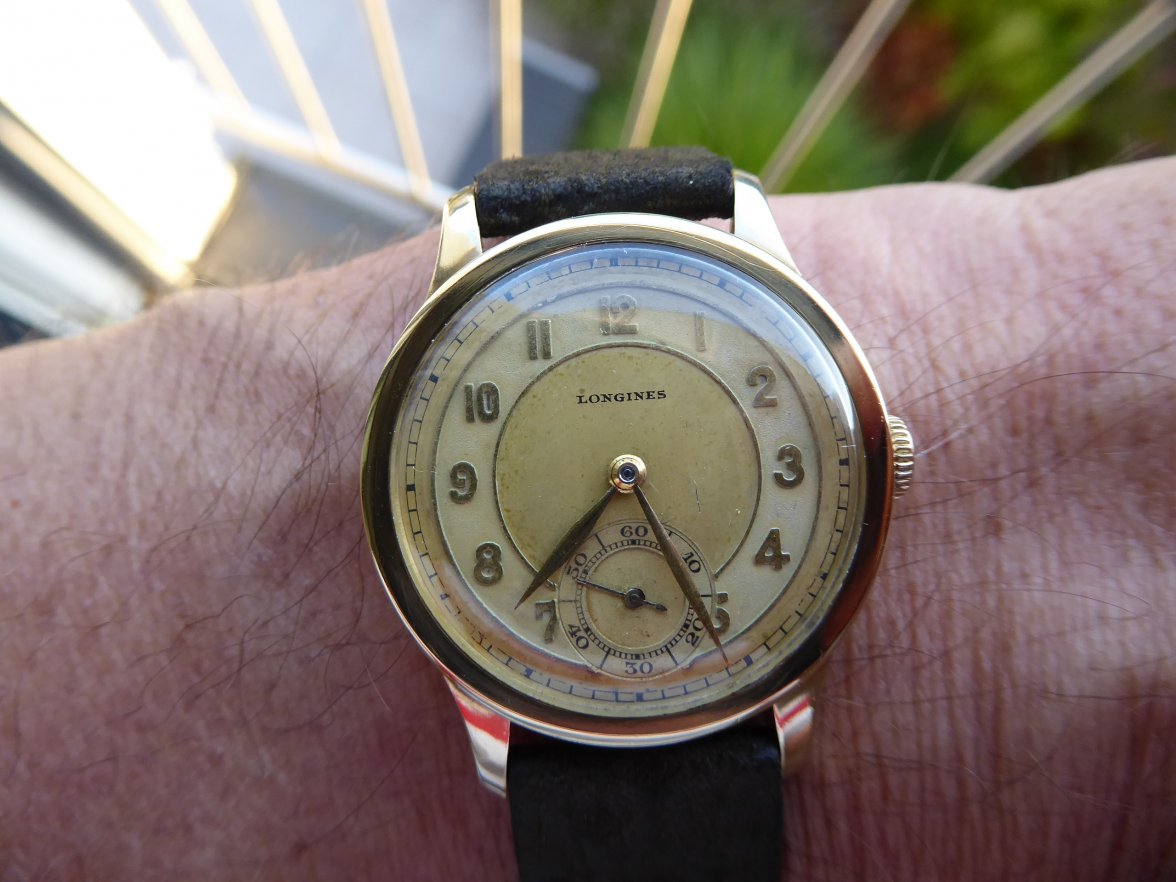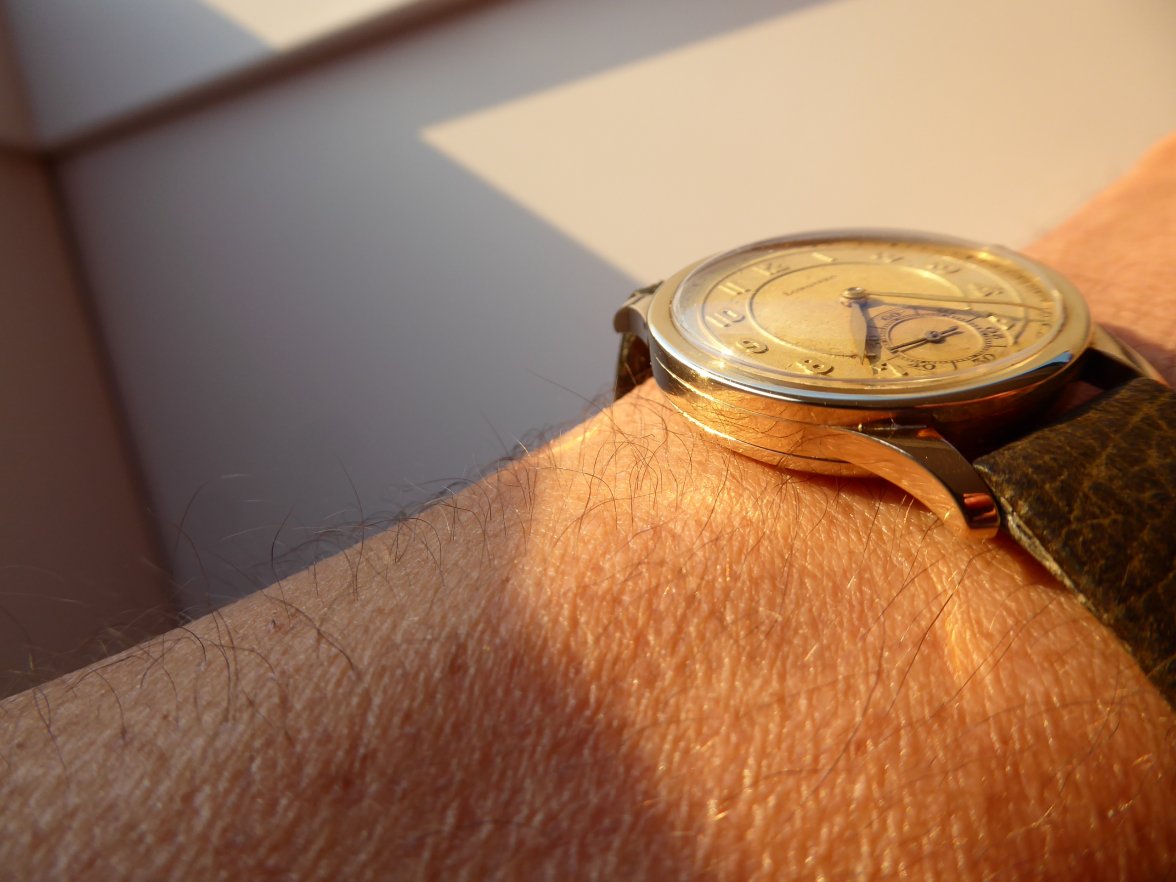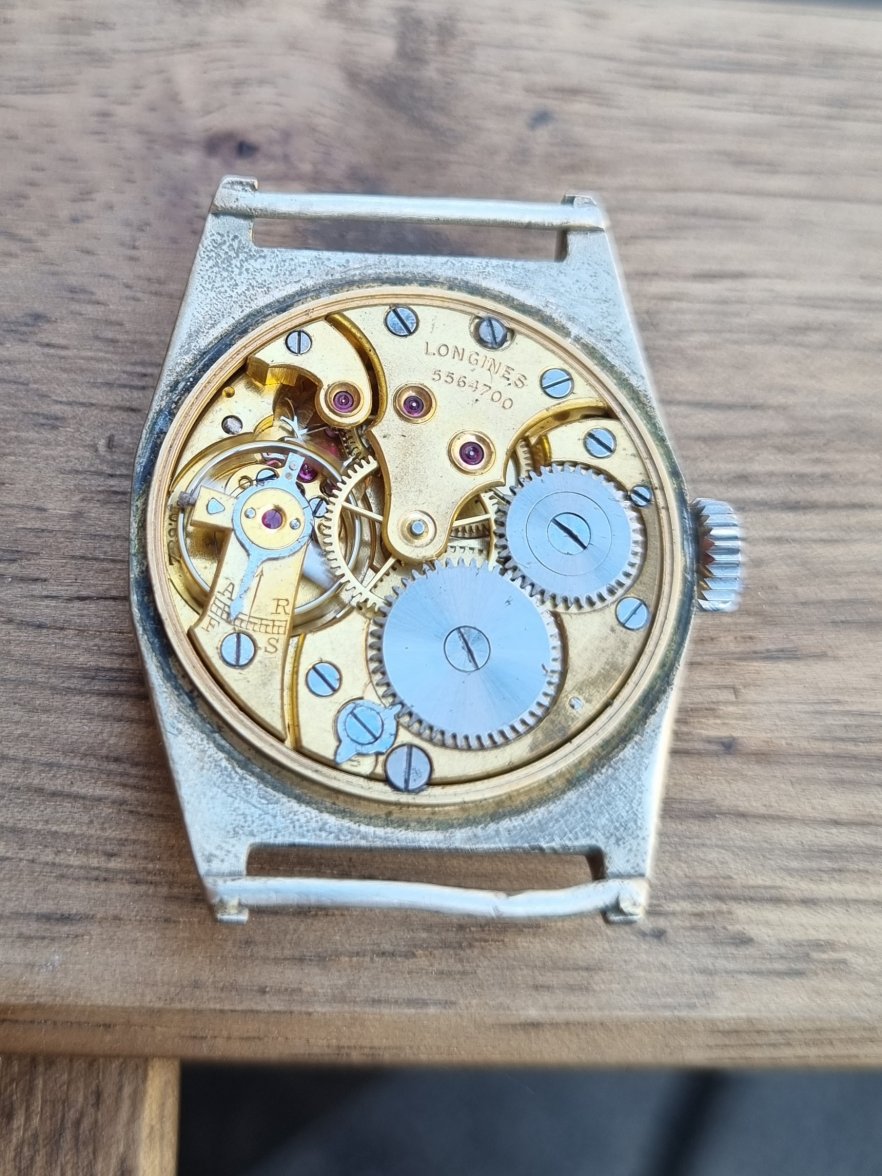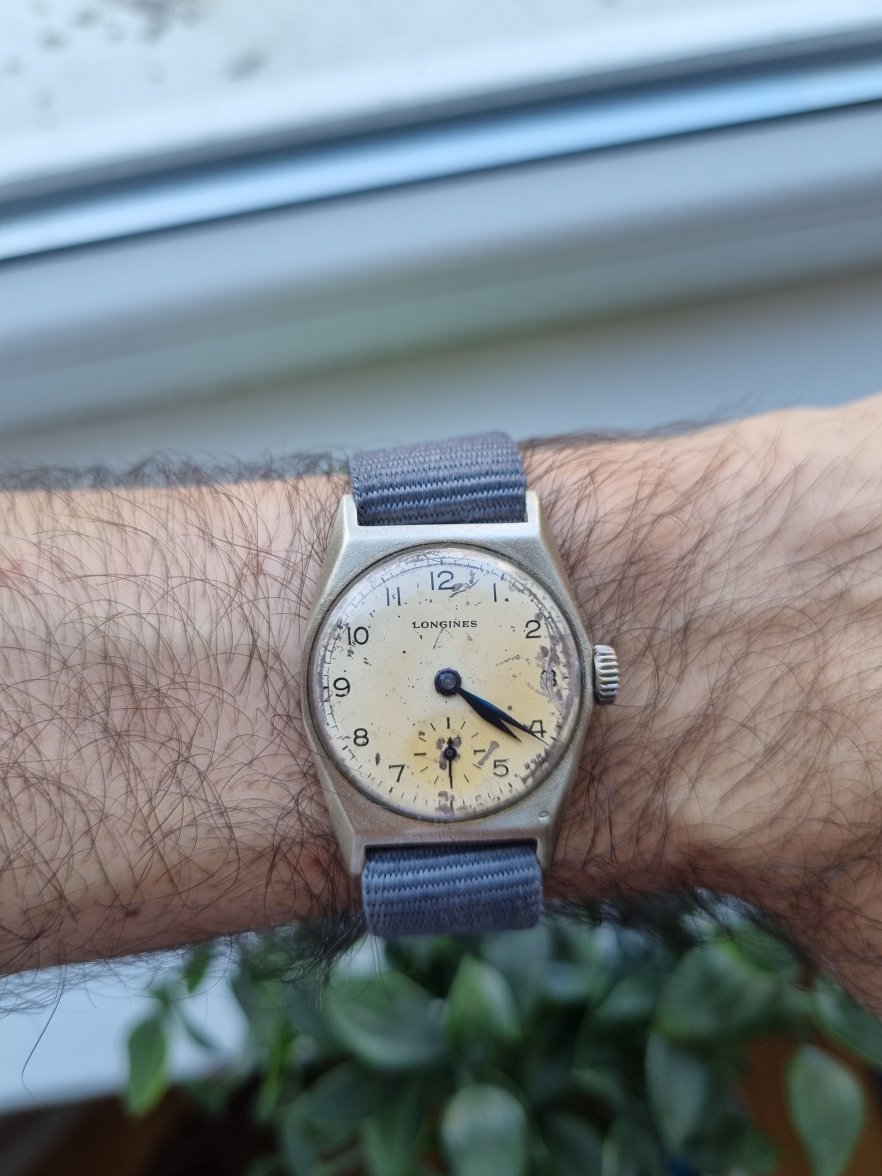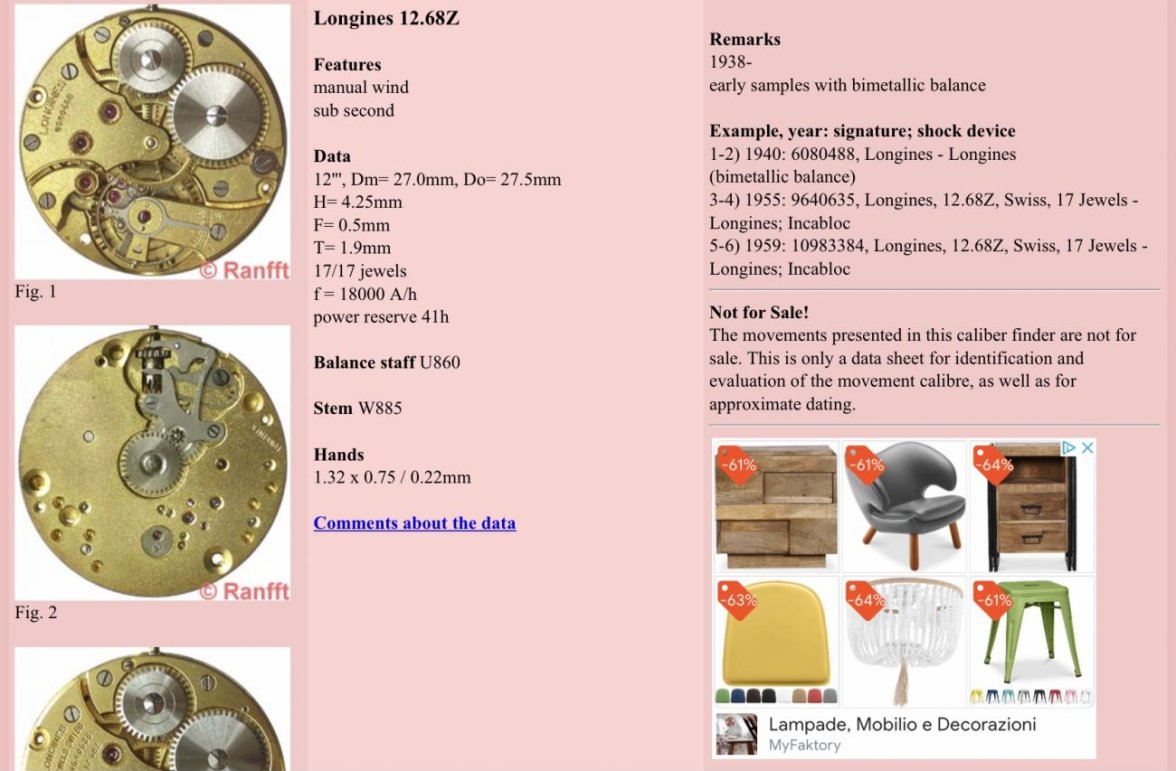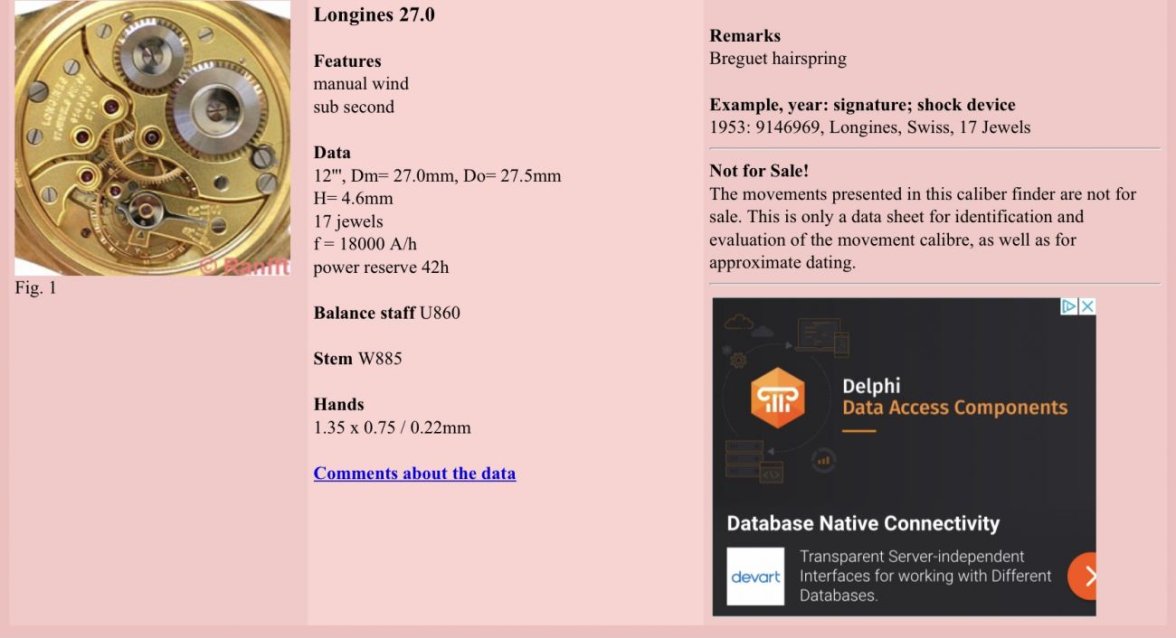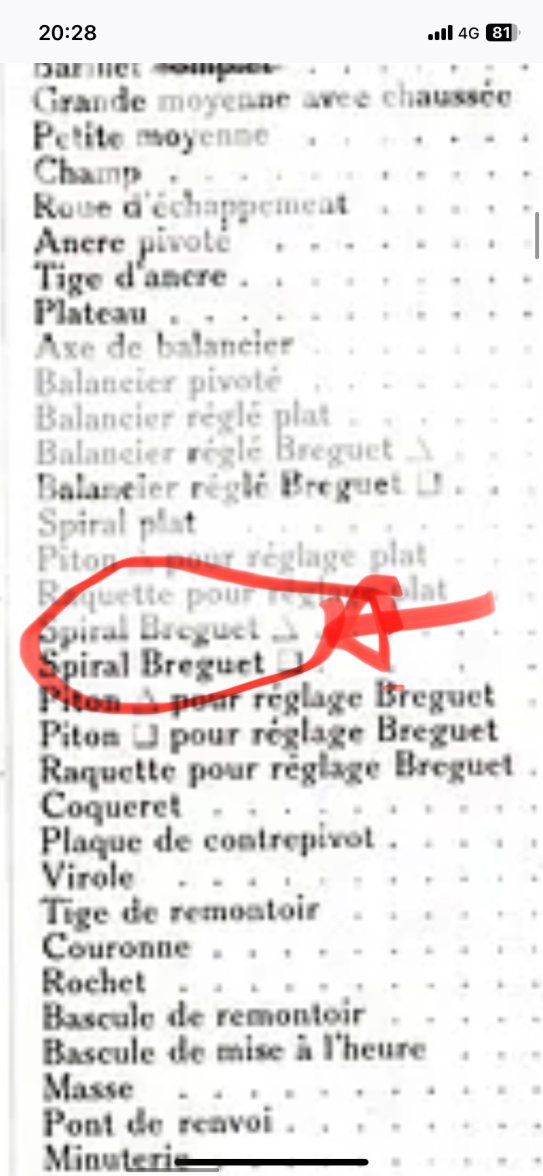Another Balaclava: 1930s Longines
DirtyDozen12
·This a wonderful 1930s thread and I want to contribute this 1938 ref. 3496 in 14 K. Inside ticks a 27.0 caliber. It has also small 30mm but looks great on the wrist. Beautiful with the applied dial and one of the nicest cases.
BlueHands
·This is an exceptional piece! The dial is spectacular. Thank you for sharing photos and information. Somehow, I missed your post.
the community.
- Posts
- 55
- Likes
- 17
- Posts
- 55
- Likes
- 17
- Posts
- 55
- Likes
- 17
setible
·Hello, it’s a 23.O, a thinner version of the 10.68, and designed indeed to be paired to a gold case -« O » stands for « or » which means gold in French.
Syrte
·The 23M and the 27M were initially developed during the 1940s for the US market, where there was wealth and high demand for thinner watches, which were perceived as more advanced and more elegant.
The US had become one of Longines largest market if not THE largest market for civilian watches during WWII.
Edited:
- Posts
- 55
- Likes
- 17
setible
·It is thinner because the 23.O and the 27.O are the gold versions of 23M and 27M where « M » stands for « mince » which means thin in French.
The 23M and the 27M were initially developed during the 1940s for the US market, where there was wealth and high demand for thinner watches, which were perceived as more advanced and more elegant.
The US had become one of Longines largest market if not THE largest market for civilian watches during WWII.
- Posts
- 55
- Likes
- 17
setible
·Also, why had two mince versions of the same caliber?
- Posts
- 55
- Likes
- 17
setible
·- Posts
- 55
- Likes
- 17
setible
·Thanks to our italian brothers and sisters:
https://orologi.forumfree.it/?t=78664766
https://orologi.forumfree.it/?t=78664766
Syrte
·Because Longines in the early to mid 20th century kept introducing new names and variations on all of its movements which would defy logic today. The same caliber has different parts and details over time and not all 12.68 are alike.
There are 12.68Z movements that are central second movements and 12.68N movements that are central second movements, where « N » stands for « new » (nouveau) in French.
Also, I seem to recall the info coming from someone at Longines but it should be easy to verify in the Patrick Linder book on Longines movements- maybe @DirtyDozen12 would also remember. I moved a few months ago so I don’t recall off hand where all of my Longines books are.
Syrte
·That’s interesting, so perhaps the 23M is thinner and the 23.O is thicker to make up for the lesser rigidity of the gold case?
I always assumed the 23M and 23O were identical because the O is the gold case version of the M, but this clearly seems to indicate otherwise.
How thick is the 23M and the 27M according to Ranfft, that would also be interesting.
- Posts
- 55
- Likes
- 17
setible
·Thinner than 10.68z, 12.68z. But the one in gold were upgraded... including Breguet, finish quality and thickness...
Syrte
·It’s obvious to me that some of the assertions in that O&P thread are incorrect,
And all of the people commenting are forum newbies except for Daniele (Il Falegname ) and Nowhere Man, and Music and Watches.
For example the notion that 12.68Z hairsprings were all flat and not Breguet is completely inaccurate and with all due respect ridiculous. It’s a movement that was produced for 30 years with a gazillion variations, including fancy rhodium plating and Geneva stripes, and of course Breguet hairsprings.
You’ll note in that O&P thread Nowhere Man linked another one, posted by a real Longines expert, Maurizio username MSX, one of the top Longines collectors IMHO- he posted a complete list of parts of the 12.68 which confirms of course that some 12.68 movements had Breguet hairsprings (« spiral » in French). (See below circled in red).
Ranfft is an invaluable ressource but it is so vast it can only scratch the surface and only accounts for a minuscule fraction of the Longines universe.
That being said, the thickness info is very interesting, I’ll be curious what it says for the 23M and 27M.
And all of the people commenting are forum newbies except for Daniele (Il Falegname ) and Nowhere Man, and Music and Watches.
For example the notion that 12.68Z hairsprings were all flat and not Breguet is completely inaccurate and with all due respect ridiculous. It’s a movement that was produced for 30 years with a gazillion variations, including fancy rhodium plating and Geneva stripes, and of course Breguet hairsprings.
You’ll note in that O&P thread Nowhere Man linked another one, posted by a real Longines expert, Maurizio username MSX, one of the top Longines collectors IMHO- he posted a complete list of parts of the 12.68 which confirms of course that some 12.68 movements had Breguet hairsprings (« spiral » in French). (See below circled in red).
Ranfft is an invaluable ressource but it is so vast it can only scratch the surface and only accounts for a minuscule fraction of the Longines universe.
That being said, the thickness info is very interesting, I’ll be curious what it says for the 23M and 27M.
- Posts
- 55
- Likes
- 17
setible
·It’s obvious to me that some of the assertions in that O&P thread are incorrect,
And all of the people commenting are forum newbies except for Daniele (Il Falegname ) and Nowhere Man, and Music and Watches.
For example the notion that 12.68Z hairsprings were all flat and not Breguet is completely inaccurate and with all due respect ridiculous. It’s a movement that was produced for 30 years with a gazillion variations, including fancy rhodium plating and Geneva stripes, and of course Breguet hairsprings.
You’ll note in that O&P thread Nowhere Man linked another one, posted by a real Longines expert, Maurizio username MSX, one of the top Longines collectors IMHO- he posted a complete list of parts of the 12.68 which confirms of course that some 12.68 movements had Breguet hairsprings (« spiral » in French). (See below circled in red).
Ranfft is an invaluable ressource but it is so vast it can only scratch the surface and only accounts for a minuscule fraction of the Longines universe.
DirtyDozen12
·Hello @setible and @Syrte, I consulted Patrick Linder's book "At the Heart of an Industrial Vocation" and these were the relevant heights:
12.68Z = 4.25 mm
27.0 = 4.25 mm
12.68N = 5.45 mm
27M = 3.20 mm/4.30 mm (center seconds)
I suspect that the Ranfft dimension of 4.6 mm is incorrect, as Linder's book shows an image of a caliber 27.0 parts list that states a height of 4.25 mm.
12.68Z = 4.25 mm
27.0 = 4.25 mm
12.68N = 5.45 mm
27M = 3.20 mm/4.30 mm (center seconds)
I suspect that the Ranfft dimension of 4.6 mm is incorrect, as Linder's book shows an image of a caliber 27.0 parts list that states a height of 4.25 mm.
- Posts
- 55
- Likes
- 17
setible
·Hello @setible and @Syrte, I consulted Patrick Linder's book "At the Heart of an Industrial Vocation" and these were the relevant heights:
12.68Z = 4.25 mm
27.0 = 4.25 mm
12.68N = 5.45 mm
27M = 3.20 mm/4.30 mm (center seconds)
I suspect that the Ranfft dimension of 4.6 mm is incorrect, as Linder's book shows an image of a caliber 27.0 parts list that states a height of 4.25 mm.
It is good to know that 27.O is in no case thinner than the 12.68z.
I agree with you 99%, because you read from what it looks to be the bible of Longines movements 😀
However, there are a few things that dont add up here:
- Roland was accurate;
- other sources on the internet also mention the thickness of 27.O
-my own late watchmaker tried once to save a scraped 27.O movement by placing it in a 12.68z case, but it could not, because of the thickness (thats what he told me).
For this reason (being a newbie and all), i would very much like to get my hands on a 27.O and simply measure it 😀
@Syrte a bit offtopic, but about the 12.68z using Breguet hairspring... after my knowledge (and common sense) when they used it, it was an aberation, not a rule (Longines 30l is a different case)
Similar threads
- Posts
- 18
- Views
- 4K

